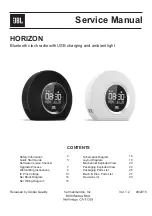
37
TROUBLESHOOTING
The problems described in this table are commonly encountered operational
malfunctions and are usually not caused by circuit failure.
Problem
Probable Cause
Corrective Action
Nothing appears on
the display when the
transceiver is switched
ON, or the display is
blinking ON and OFF.
1
The battery pack is
discharged.
2
The DC cable or
connection is bad.
3
The power supply
fuse is open (blown).
1
Recharge the battery pack
or replace the battery.
2
Replace the cable.
3
Investigate the cause for
the open fuse and replace
the fuse.
Most keys and the
Tuning
control do not
function.
1
One of the Lock
functions is ON.
2
The transceiver is
in Channel Display
mode.
1
Unlock all of the Lock
functions.
2
With the transceiver
power OFF, press
[PTT] +
[A/B] + Power ON
to exit
Channel Display mode.
You cannot select the
exact desired frequency
using the
Tuning
control.
Programmable VFO
frequency range is too
narrow.
Expand the frequency range
in Menu No. 130 (Prog.VFO).
Memory channels
cannot be selected
by turning the
Tuning
control or by pressing
[ ]/[
]
.
No data has been stored
in any Memory channel.
Store data in some Memory
channels.
The receiving sound
volume is weak even if
the signal is strong.
The receiving station
may be operating
in narrow band FM
bandwidth.
Access Menu No. 131
(Modulation) to select “NFM”.
Turning the VOL control
does not allow you to
hear audio.
The selective call
function (CTCSS or
DCS) is ON.
Turn OFF the selective call
function.
















































